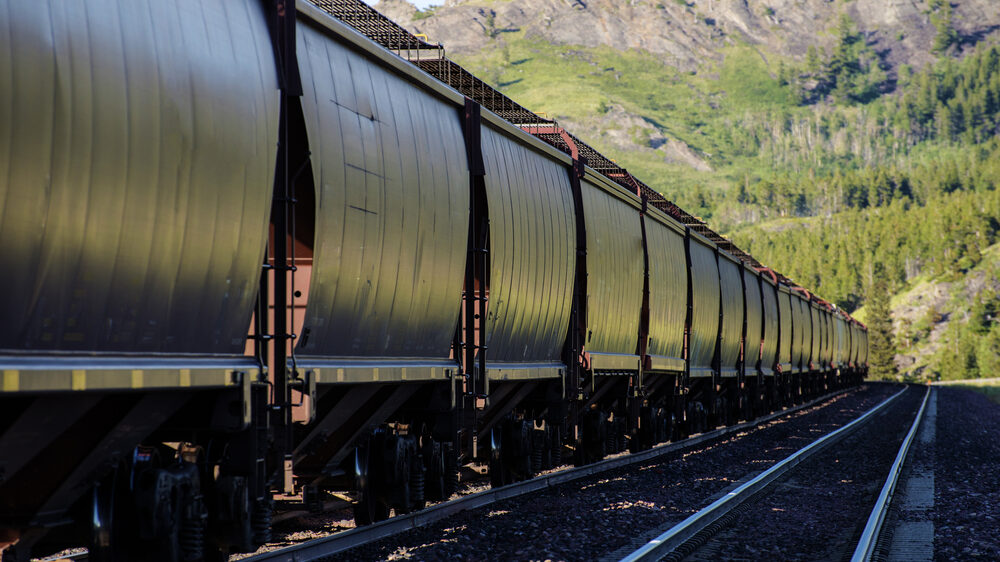The U.S. Department of Agriculture is asking the Surface Transportation Board to adopt rail shipper-friendly policies such as reciprocal switching and require the collection of first- and last-mile data, according to a Wednesday letter.
USDA’s letter mentions one sent March 24 by the National Grain and Feed Association (NGFA) that told the board that service disruptions have increased following the Class I railroads’ implementation of precision scheduled railroading (PSR), an operational model that seeks to streamline operations.
USDA, STB and other agencies are also under pressure to respond to a July 2021 order from President Joe Biden that federal agencies explore and address the issue of competition, including rail competition.
The letter from Agricultural Secretary Tom Vilsack asks for STB to take “urgent action” to improve rail service for agricultural commodities, particularly for the livestock feed markets. While not naming PSR specifically, the letter refers to the railroads’ efforts to cut assets in locomotives and crews in order to focus on operating ratios and profitability.
Service issues are occurring at rail-served origins and destinations, and the situations in USDA’s letter echo those mentioned in NGFA’s letter about mills shutting down because of an inability to source grain, or livestock operations being unable to get feed for their animals.
USDA is asking the board to:
• Move forward with ex parte (EP) 767 and collect first- and last-mile data.
• Collect more frequent and granular service data in EP 724 than is currently collected. (EP 724 calls for U.S. Class I railroad operations to submit weekly data on certain rail performance metrics such as train speeds and dwell time.)
• Move forward with EP 768 to allow owners of private railcars to assess delay charges on the railroads for inefficient use of cars. Shippers have reported trains waiting to be picked up for more than a week.
• “If conditions continue to worsen, use the authority, given by the STB Reauthorization Act of 2015, to investigate the cause and impact of the service issues, especially in light of railroads’ shift to PSR and their significant cuts in train and engineer crews, and the effects these changes have had on the railroads’ common carrier obligation.”
• Finalize a reciprocal switching rule “that provides shippers with relief in the form of an alternative rail option in the face of poor service from their incumbent railroad.”
USDA is also asking STB to consider suspending rate increases and additional fuel surcharges, as well as whether demurrage charges are being applied appropriately.
“Given the high cost of disruptions to producers and agricultural stakeholders alike, USDA urges the board to take immediate action to improve service,” Vilsack said. “USDA supports recommendations that the board obtain plans from the railroads to improve the current service situation and weekly updates from them to ensure they follow through with their plans. USDA also supports the recommendation to collect annual service assurance plans from the railroads.”
The railroads have asserted that they are taking concrete steps to fully restore service, such as hiring new employees to fill train and engine crew ranks. Those new hires will be available in the second half of this year.
In a March 25 service update, BNSF said it has undertaken an “aggressive program” to address service performance, which has been hampered by frequent extreme weather as well as pandemic-induced global supply chain disruptions. These two factors resulted in reduced productivity and excess railcar delivery.
“After implementing our service recovery program three weeks ago, we are making incremental progress in addressing elevated railcar inventory levels, reduced velocity and resource imbalances with freight volumes,” BNSF said.
Ted Greener, a spokesman for the Association of American Railroads, responded, “Railroads work diligently with their customers and supply chain partners to ensure we can meet our customers’ needs. The past couple of years have seen unprecedented disruptions in the supply chain, which railroads continue to navigate alongside others — including customers.
“Yet, in the face of these challenges, 2021 saw the railroads move the highest volume of grain since 2008. Cooperation and communication are key to progress, and railroads will continue to ensure the free flow of goods to serve our customers and support the nation’s economy,” Greener said.
Subscribe to FreightWaves’ e-newsletters and get the latest insights on freight right in your inbox.
Click here for more FreightWaves articles by Joanna Marsh.










